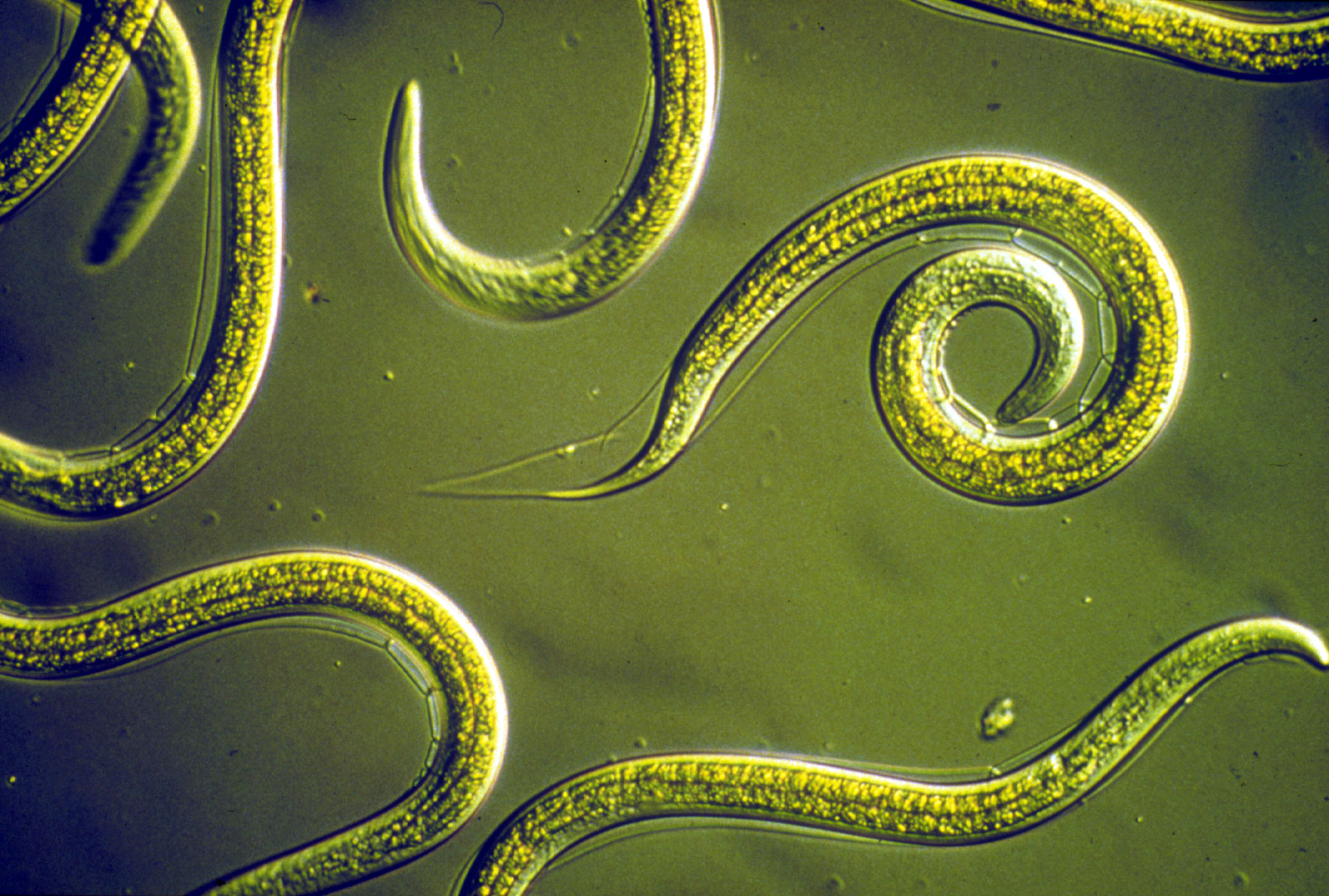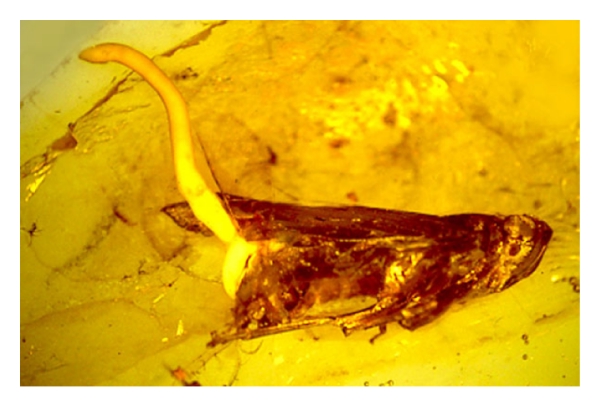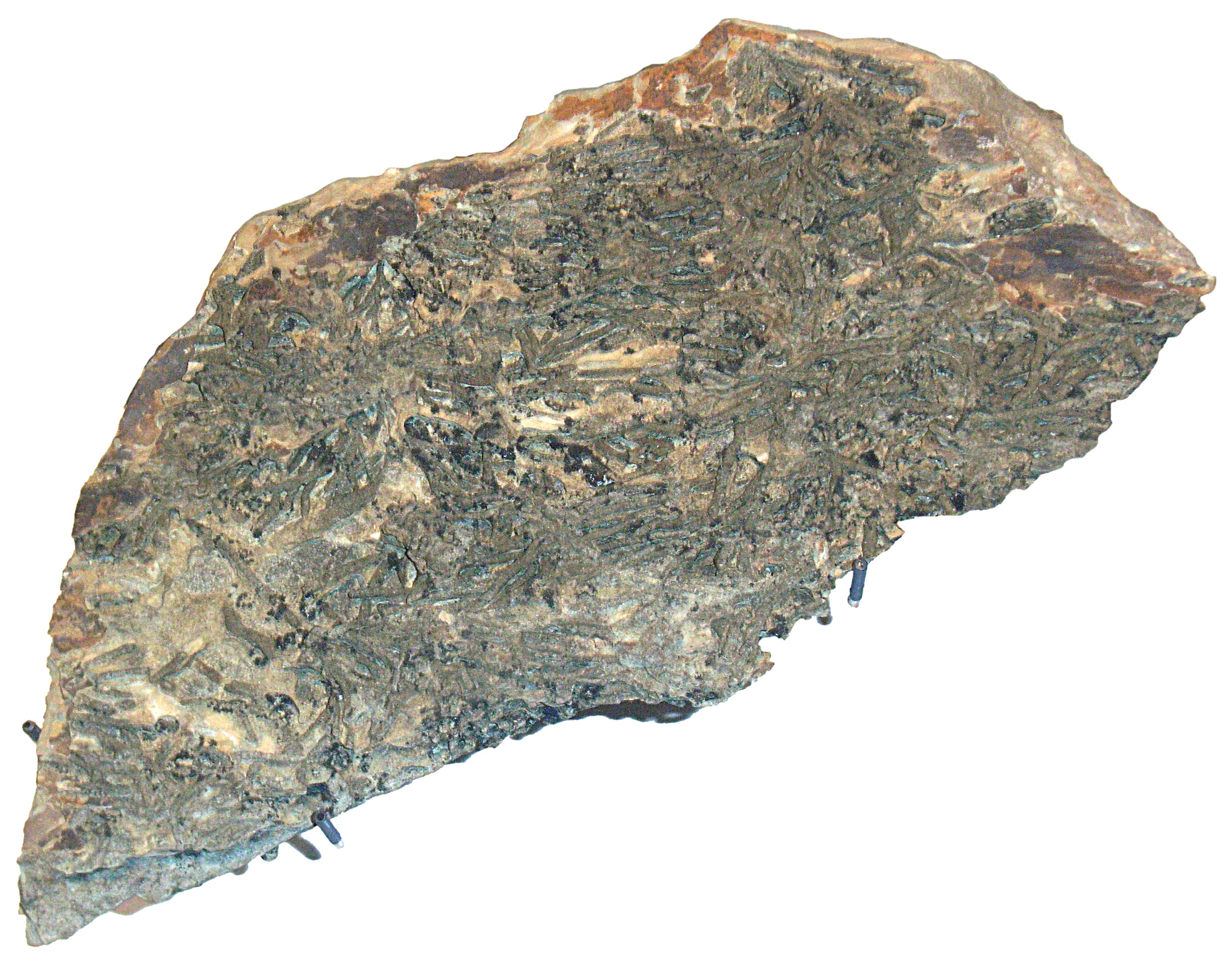
Credit: CSIRO, CC BY 3.0, via Wikimedia Commons
Nematodes aren’t toads at all, but worms. Roundworms, specifically, with cylindrical bodies. Different species are so nondescript we have a hard time telling them apart.
That may make them sound uninteresting, but I assure you, they’re anything but.
Nematodes are some of the oldest animal lifeforms on Earth, having appeared perhaps a billion years ago. And they’ve been a huge success.
To start, their population is enormous. For every human on the planet, there are 60 billion nematodes. You might wonder where they are, then.
Many live in the dirt. There are millions beneath your feet, digesting organic matter to enrich the soil so plants can grow.
Some live below the dirt. They’ve been found 12,000 feet deep, in mines.
Others have evolved to be parasitic, living within all kinds of organisms.
Many species are tiny, just 1 millimeter long. But the kind that lives in whale intestines can reach 40 feet!
Scientists recently found 46,000-year-old, previously unknown nematodes frozen in Siberian permafrost. When thawed, they wriggled back to life.
Samples of nematodes even survived the deadly space shuttle crash. Which begs the question:
Could extraterrestrial organisms have survived a meteor ride to Earth millions of years ago to diversify and populate the planet?
If so, maybe it was the not-so-lowly nematode.
Background
Synopsis: Nematodes, also known as roundworms, have been around for hundreds of millions of years. While some are parasites, free-living soil nematodes are tiny organic-material decomposers essential to soil formation. Researchers estimate that there are 60 billion soil nematodes for every human on the planet. Recently, Pleistocene nematodes were revived from 46,000-year-old Siberian permafrost. Life had been suspended for this extinct species but was restarted as the thawed individuals started moving then produced living offspring.
- Nematodes are among the most abundant animals on Earth.
- While most plentiful in marine, freshwater and soil habitats, they are found in almost every environment on Earth, and many are extremophiles.
- Because of their typical microscopic size, they are often overlooked—a square yard of soil may contain several million nematodes.
- A recent census of just soil nematodes determined that for every human on Earth there are 60 billion nematodes underfoot.
- Worldwide, that’s 4.4×1020 microscopic soil nematodes, with a biomass about half that of all humans on Earth.
- Surprisingly, the census showed they are most plentiful in temperate boreal forests as compared to tropical soils.

Anatomical drawing of a male C. elegans nematode, typically about 0.75 mm long. Mouth is upward. The actual worm is colorless and transparent.
Credit: K. D. Schroeder, CC BY-SA 3.0, via Wikimedia Commons
- Nematodes are invertebrate unsegmented worms that are round in cross section. (Earthworms are an example of segmented worms, a different phylum of worms.)
- The main evolutionary innovation of nematodes is development of the first complete digestive system with two openings (mouth and anus). Roundworms have a bilaterally symmetric body with a radially symmetric head.
- Most nematodes range in size from 0.1 to 2.5 mm long. The longest free-living species are up to 2 in (500 mm) long, while parasitic nematodes can reach over 3 ft (1 m) in length. One parasitic roundworm that lives in whales can grow up to 42 ft (13 m).
- Nematode species are hard to tell apart, so while it is estimated that there are more than a million species of roundworms, only about 30,000 species have been described.
Italian fossil of Eophasma jurasicum, an extinct nematode that lived 195 million years ago (Jurassic Sinemurian).
Credit: Ghedoghedo, CC BY-SA 3.0, via Wikimedia Commons
The parasitic nematode Heydenius brownii was preserved while emerging from a planthopper insect in Eocene (56–34 Ma) Baltic amber.
Credit: George Poinar, CC BY 4.0, via Wikimedia Commons - The most well documented of the nematodes are the parasitic varieties because of their impact on human and agricultural health, but the less-studied nonparasitic free-living nematodes that serve as decomposers are much more numerous at both the species and individual level.
- Roundworms are made of soft tissue, so they are not well preserved in the geological record unless they are captured as parasites within fossilized plants or animals.
- The earliest known nematode fossil is a plant parasite found in a stomatal chamber of an Early Devonian land plant dated at 396 million years old.
- Early Cretaceous Burmese amber from about 100 million years ago preserved nematodes that were insect parasites.
- It is thought that nematode parasitism evolved several times as free-living nematode larvae became intimately associated with plants and animals, developing specialized dependencies.
- Some scientists believe free-living nematodes may have been around for a billion years, but the only evidence of their earliest existence may be the fossilized burrows they might have left in ancient muds that have been preserved as the trace fossil known as chondrites.
- Some nematodes are highly specialized as parasites of plants, insects, invertebrates and vertebrates, including humans. Parasitic roundworms live off of their host and live within the tissues of their host.
- Human roundworm parasites, documented as long ago as 2700 BC in ancient Egypt, include hookworms, pinworms, whipworms, filarial worms, and worms of the genus Ascaris.
- Especially problematic in polluted and poverty-stricken areas, symptoms include stomachache, vomiting, diarrhea, and fever. Personal hygiene and access to clean water is key to avoiding infection.

These Middle Silurian chondrites from Ireland’s County Kerry are small branching burrows created some 430 million years ago. The most likely candidate for having constructed these burrows is a nematode. Chondrites are found in marine sediments from the Cambrian Period of the Paleozoic Era onward. They are especially common in sediments deposited in reduced-oxygen environments.
Credit: Notafly, CC BY-SA 3.0, via Wikimedia Commons - The same parasites may also afflict other vertebrates, while some specialize in specific host species, such as dog heartworms.
- Plant parasites come in two types, those that attack plants directly and those that act as vectors to spread plant viruses.
- Some nematode parasites prey on agricultural insect pests. These beneficial nematodes may be utilized instead of agricultural pesticides in organic gardens.
- Nematodes also occur as nonparasitic free-living forms in soil, freshwater and marine environments, including water-filled cracks deep within Earth’s crust.
- Free-living species feed on living bacteria, algae and fungi as well as larger prey such as small insects, other invertebrates and even other nematodes.
- They also play an important role in decomposition and recycling of nutrients, consuming fecal material and dead organisms.
- Nematodes have been found between 3,000 and 12,000 ft (0.9–3.6 km) below Earth’s surface in South African gold mines.
- One free-living roundworm, Caenorhabditis elegans, is used in genetic research as a model organism to understand biological phenomena and human disease.
- The entire genome of the 1 mm–long, transparent roundworm has been sequenced, and every one of its neurons has been mapped.
- In 2003, when the Space Shuttle Columbia mission STS-107 tragically broke up during reentry, an experiment featuring C. elegans housed in special canisters survived the 400 to 650 mph (660–1,050 km/h) trip through Earth’s atmosphere, dropping 20 to 26 mi (32–42 km) to eventually be found in Texas. This led NASA scientists to raise the question, Could similar extraterrestrial organisms survive a meteorite impact on Earth?
- Most roundworms live for about 4 months (although their eggs can survive for years in the soil), but scientists recently were able to revive a free-living species of nematode from Siberian permafrost that was confirmed to be 46,000 years old.
- In July of 2018, scientists from Russian universities and Princeton University in New Jersey received around 300 nonparasitic nematodes recovered from permafrost in Russia’s Sakha Republic near the Kolyma and Alazeya rivers (see related episode ED-311 Gateway to Hell).
- These were an apparently extinct species (never previously encountered) of cryopreserved roundworms in cryptobiosis— suspended animation under freezing conditions during which the animal doesn’t eat or have a metabolism.
- When revived, the nematodes began moving and eating, then reproduced asexually after 8 to 12 days.
- The upshot is that life for these organisms was stopped for 46,000 years, then reanimated—with major implications for the refounding of extinct lineages.

